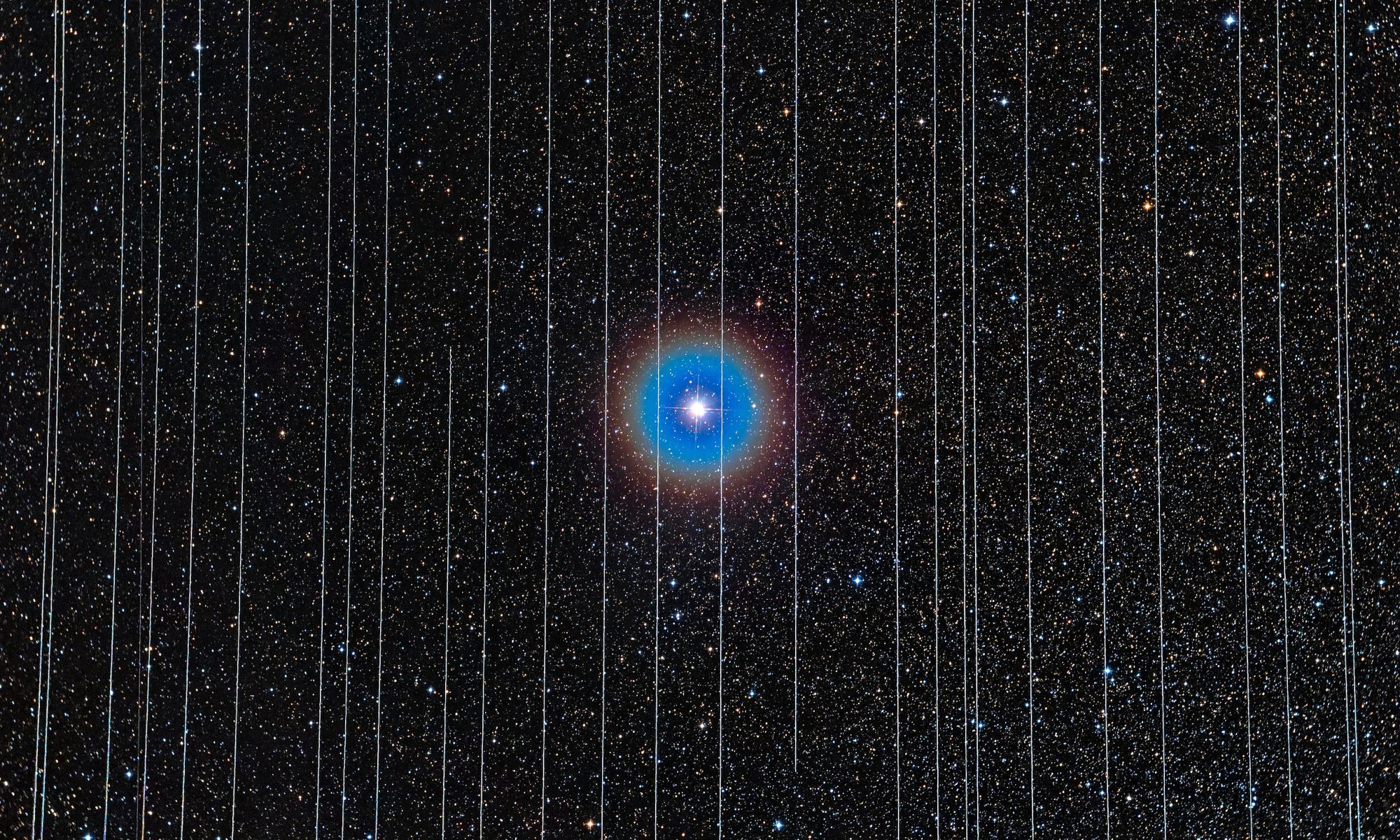Large-scale sky surveys are set to revolutionize astronomy. Observatories such as Vera Rubin and others will allow astronomers to observe how the sky changes on the scale of days, not weeks or months. They will be able to capture transient events such as supernovae in their earliest stages and will discover near-Earth asteroids we have missed in the past. At the same time, the rise of satellite constellations such as Starlink threatens to overwhelm these surveys with light pollution and could threaten their ability to succeed.
To quantify what the impact of satellite constellations could be, a team recently looked at observations from the Zwicky Transient Facility (ZTF). This survey focuses on short-duration transients, such as stellar flares of red dwarfs and microlensing events. They looked at events that only occurred in a single frame of a particular patch of sky as gathered by ZFT over three years, and sorted them into satellite events and candidate astrophysical events.
Earlier studies have looked at the impact of satellite constellations, but they primarily focused on their overall brightness. When debates over the astronomical impact of these constellations arise, a common argument is that they can be filtered out. Since the satellites drift across the sky, their trails can be identified as artificial and easily removed. But this study focused instead on glints from satellites. Since satellites change orientation as they orbit, flat surfaces on the satellites can reflect sunlight to Earth, creating a short flash or glint. Given the timescale of these glints, they don’t leave trails. Instead, they look like short-lived transients, making them more difficult to filter out of the data. The team wanted to see just how bad the situation could be as new sky surveys come online.

They found that the impact is already pretty significant. Based on the ZTF data, they estimated that most glints only last on the order of tens to hundreds of milliseconds, and across the sky, there are currently about 80,000 satellite glints per hour. It’s a tremendous amount of light pollution and will impact the transient studies of the Vera Rubin Observatory and others. With Starlink’s plans to launch even more satellites and the plans of other large-scale constellations, glints could make certain sky survey projects unfeasible.
Satellite constellations such as Starlink do have many benefits. The goal of bringing internet and data communication to the most remote areas of the world is a noble one. But it comes at a cost, both financially and in what it robs of our view of the heavens. There are choices to be made between connecting everyone instantly and the heritage of our dark skies.
Reference: Karpov, Sergey, and Julien Peloton. “The rate of satellite glints in ZTF and LSST sky surveys.” arXiv preprint arXiv:2310.17322 (2023).


Could future starling (and other) satellite surfaces be modified to prevent the “glints”?
When I read about how AI can sort through telescope data and identify tiny changes or irregularity, it would surprise me if AI could not be “trained” to isolate and eliminate there “glints” by identifying them as artificial.
Isn’t this part of the reason for shifting telescope work to space, either Earth orbit or fixed position?
One way or the other, it sounds like this is a solvable problem.